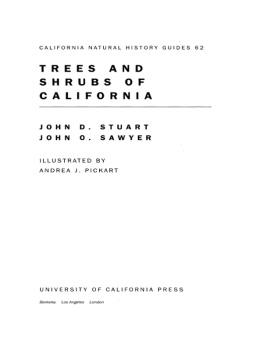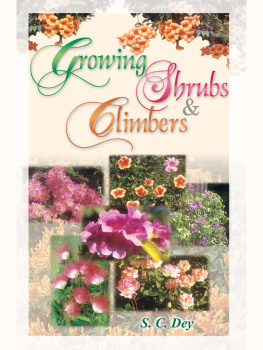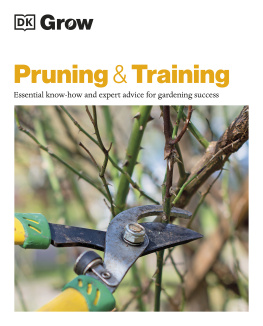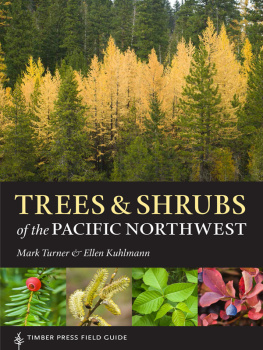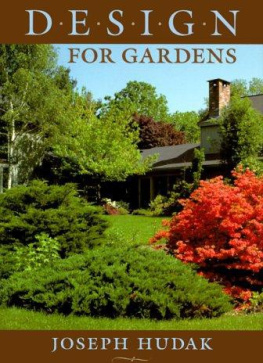Japanese spiraea Anthony Waterer (Spiraea japonica Anthony Waterer)
SHRUBS & HEDGES
Discover, Grow, and Care for the Worlds Most Popular Plants
EVA MONHEIM


2020 Quarto Publishing Group USA Inc.
Text 2020 Eva Monheim
First Published in 2020 by Cool Springs Press, an imprint of The Quarto Group, 100 Cummings Center, Suite 265-D, Beverly, MA 01915, USA.
T (978) 282-9590 F (978) 283-2742 QuartoKnows.com
All rights reserved. No part of this book may be reproduced in any form without written permission of the copyright owners. All images in this book have been reproduced with the knowledge and prior consent of the artists concerned, and no responsibility is accepted by producer, publisher, or printer for any infringement of copyright or otherwise, arising from the contents of this publication. Every effort has been made to ensure that credits accurately comply with information supplied. We apologize for any inaccuracies that may have occurred and will resolve inaccurate or missing information in a subsequent reprinting of the book.
Cool Springs Press titles are also available at discount for retail, wholesale, promotional, and bulk purchase. For details, contact the Special Sales Manager by email at or by mail at The Quarto Group, Attn: Special Sales Manager, 100 Cummings Center, Suite 265-D, Beverly, MA 01915, USA.
Digital edition: 978-0-76036-685-1
Softcover edition: 978-0-76036-684-4
Digital edition published in 2020
Library of Congress Cataloging-in-Publication Data
Monheim, Eva, author.
Shrubs and hedges : discover, grow, and care for the worlds most popular plants / by Eva Monheim.
LCCN 2019042458 (print) | LCCN 2019042459 (ebook) |
ISBN 9780760366844 (trade paperback) ISBN 9780760366851 (ebook)
1. Shrubs.
LCC SB435 .M633 2020 (print) | LCC SB435 (ebook)
DDC 635.9/76--dc23
Design: Elizabeth Van Itallie
Front cover: Top: Janet Loughrey Photography; Garden Designer: Leslie Ebert. Bottom: Eva Monheim
Back cover: Eva Monheim
Photography: Eva Monheim, except by Louise Clark on pages .
Illustrations: Mattie Wells on pages .
To Sarah, Andrew, Mohamed, Rachel, Stephen, and all my students.
Always follow your passion!
A shrub-lined stream bank at Chanticleer Garden in Wayne, Pennsylvania
INTRODUCTION
S hrubs, hedges, and hedgerows have long been part of my consciousness. My earliest recollections of these plants are from the neighborhood in which I was born. It was a new housing development near Philadelphia built on an old dairy farm in the early 1950s. There were older homes scattered around the edges of our development that dated back to the late nineteenth and early twentieth century. Across from our twin home of brick was an old stone- and asbestos-sided farmhouse with a giant hedge demarcating the boundary of the property. Looking back now, that house was a morsel of the rural life that no longer existed in our neighborhood. The land around it looked nibbled awaya remnant of its former self. There was also an old barn converted into a garage. Chickens, a dog, and a cat lived with the elderly couple who would pass on when I was still young, leaving a bygone era of an earlier America.
The giant hedge went on for an entire block. It ran along a small, narrow street that must have been a shady lane at one time. The hedge was trimmed once a year and then less frequently as the years passed. As the couple got to their final years, the hedge began to sag and bow outward and inward, like a moving caterpillar. The mouth of the hedge was a metal gate, and when opened, it led up a straight path to the wraparound porch. The hedge was privet, with its signature deep green color, and overhung with old trees to create a cooling effect in summer. On dark nights, the old home looked austere.
Toward the other end of the block sat another home, similar in age and style, with another wraparound porch. It too had a lush green privet hedge marking the property lines. Behind this carefully clipped hedge was a beautiful flower garden of roses and perennials. This home served as our local Unity-Frankford store where we could purchase almost anything for the familys needs. The owners had an old barn that was updated and painted in privet green and whitethe typical colors of old farmhouses of the time. The big doors once opened for carriages to enter. On the side of the barn were old horse stalls, with Dutch doors that split in the middle so the horses could hang their heads over.
The privet hedges defined each of these properties, and with a depth of about 2/ feet (76.2 cm), they became habitat for chatty birds to rest and keep cool during the hot summer. In the late afternoon, when I would walk by the hedges on my way to the store, I could feel cool air on my legs. At the time, no one used the term microclimate, but thats what I was experiencing, thanks to the hedge border. When in bloom in late spring, the flowers were attractive to a myriad of pollinators and smelled thick and sweet.
Mountain Laurel (Kalmia latfolia) is a beautiful flowering shrub, ideal for shady to semi-shady areas of the landscape.
My family also had a hedge behind our home, marking the boundary between us and the house that sat below. Our honeysuckle hedge was trained over a thick cattle fence, which created an entirely different boundary than the privet hedges of our neighbors properties. The metal fence provided the framework for the hedge that spilled over the fence. It formed a soft, rounded arch, unlike the flat, sheared privet hedges. When the honeysuckle came into bloom, the hedge became a frenzied microcosm of insects pollinating the delightfully sweet, fragrant, tubular flowers. Butterflies, hummingbirds, bees, and other pollinators flew in from afar. The honeysuckle bloomed off and on all summer long.
We had a second hedgea large rambling rose bush. The deep-red blooms appeared for 2 weeks in June, with a spicy fragrance.
During the summer months, I would sometimes spend time at my Aunt Helen and Uncle Pauls farm. The farm was over 30 acres (12 ha) and was parceled up by a series of hedgerows. Each field was planted with a different crop, and the hedgerows separated each crop from the next, with only a narrow opening to allow the tractor to pass through for planting, cultivating, and harvesting. The hedgerows here were made of various species of shrubs and trees. Along the base of the hedgerows were small flowering plants and groundcovers. These mini ecosystems were the remains of the ancient woods that once stood there, before the forests were cleared for farming. The hedgerows provided wind blocks and housed insect-eating birds and pollinating insects. They were also home to many a fox, raccoon, and opossum.


